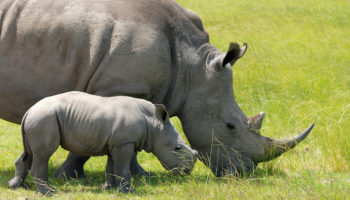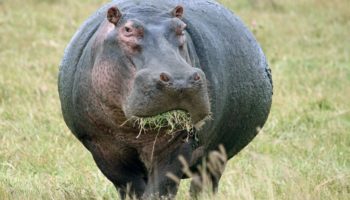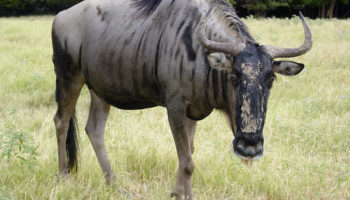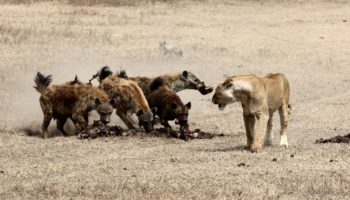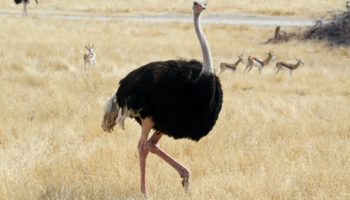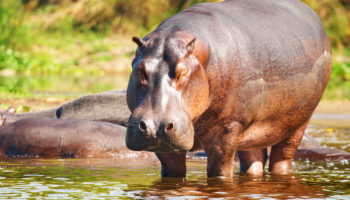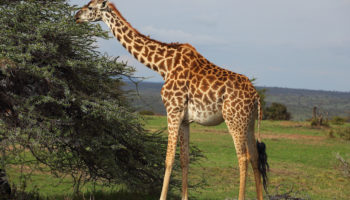One of the largest and oldest groups of animals to ever walk the Earth, rhinos are not only native to Africa but South and Southeast Asia too. While they once roamed across a much larger range, today the incredible creatures mainly live on nature reserves or in national parks with three out of the five types of rhinos now sadly being listed at critically endangered and at risk of extinction.
Renowned for their striking size, armor-like skin and hard horns, the massive mammals can weigh anywhere between 1,100 to almost 8,000 lb and measure more than 13 feet in length. Impressively enough, rhinos grow this big on a solely herbivorous diet, consuming vast quantities of grass, twigs, shoots and leaves each day.
While ongoing conservation efforts have thankfully seen some of the small, fragmented populations rebound, all the rhino species’ survival is still threatened by poaching, habitat loss and the traditional medicine trade in many parts of the world.
1. White rhinoceros
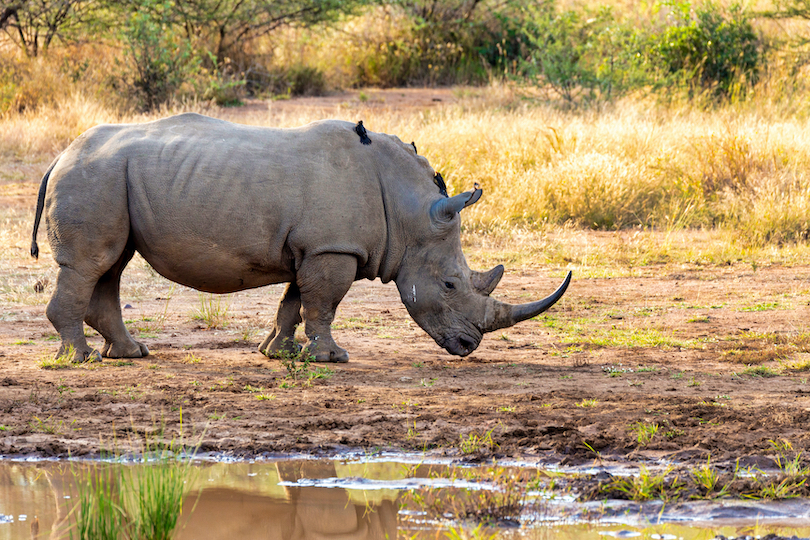 © Dreamstime
© DreamstimeThe largest species of rhino in the world, the white rhinoceros can weigh up to a staggering 7,940 lb and stretch over 13 feet in length. Consisting of two distinct subspecies that are actually both grey, the humongous herbivores inhabit grassland and savannah habitats across much of Southern Africa, having previously ranged across parts of East and Central Africa too.
While the southern white rhinoceros is actually the most common of its kind with more than 20,000 reckoned to still be living in the wild, the entire population of northern white rhinoceros now sadly consists of just two members. As Najin and Fatu are both female, the subspecies is considered to be functionally extinct with the rare rhinos being provided with around-the-clock protection in Kenya.
2. Black rhinoceros
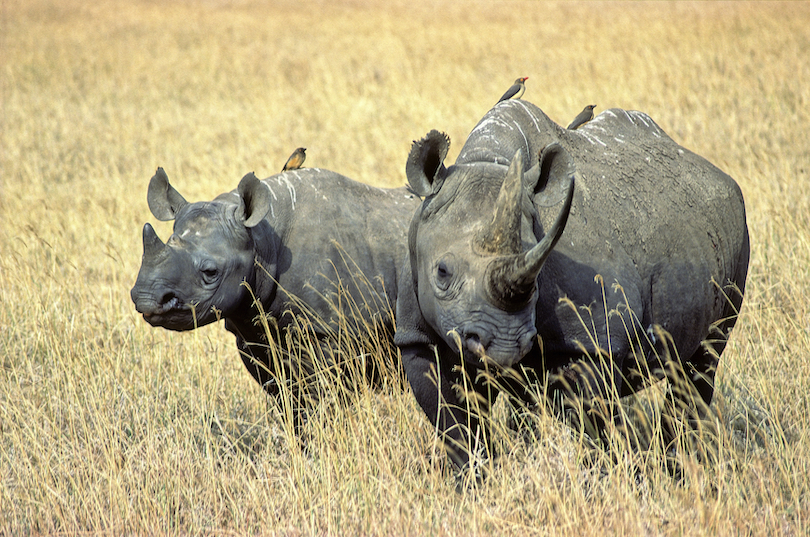 © Dreamstime
© DreamstimeAlthough their greyish skin is not discernibly different from that of their cousin, the black rhino can be distinguished by their higher-held head, ‘hooked’ rather than ‘square’ lips and longer front horn. It is also significantly smaller in size on average as adults weigh about 1,760 to 3,090 lb and reach 9 ft 8 in to 12 ft 3 in with the critically endangered creatures also occupying slightly different areas.
Once widespread across much of southern and eastern Africa, the black rhino is believed to consist of seven or eight subspecies although three have now tragically been declared extinct. While the big beautiful browsers could once also be found in West Africa, they now only reside in nature reserves in countries such as Kenya and Tanzania, Malawi, Zambia and South Africa. Due to hunting, habitat loss and civil war, their total population now stands at around 5,500 across the whole continent.
3. Indian rhinoceros
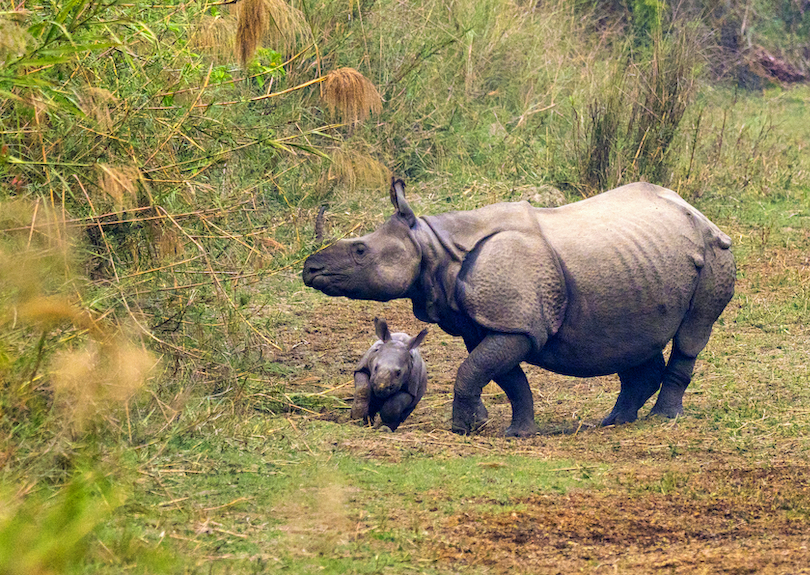 © Dreamstime
© DreamstimeAlso known as the greater one-horned rhinoceros, the awe-inspiring Indian rhinoceros once ranged across much of the Indian subcontinent including Pakistan, Bangladesh and Myanmar. Nowadays, it is mainly confined to pockets of protected areas in both India and Nepal while the vast majority of the vulnerable species resides at Kaziranga National Park in Assam.
Almost as large as the white rhino in Africa, it can reach 11 ft 2 in in length and clock in at 4,850 lb with most males being considerably heavier than females. Unlike their relatives, they have just one horn while pinkish skin folds cross its otherwise thick grey-brown colored skin. While they mostly live in grasslands and forests amidst the foothills of the Himalayas, they often spend over half the day wallowing in water with the massive animals also eating aquatic plants alongside other grasses. Thanks to ongoing conservation efforts, there are now estimated to be over 3,500 living in the wild.
4. Javan rhinoceros
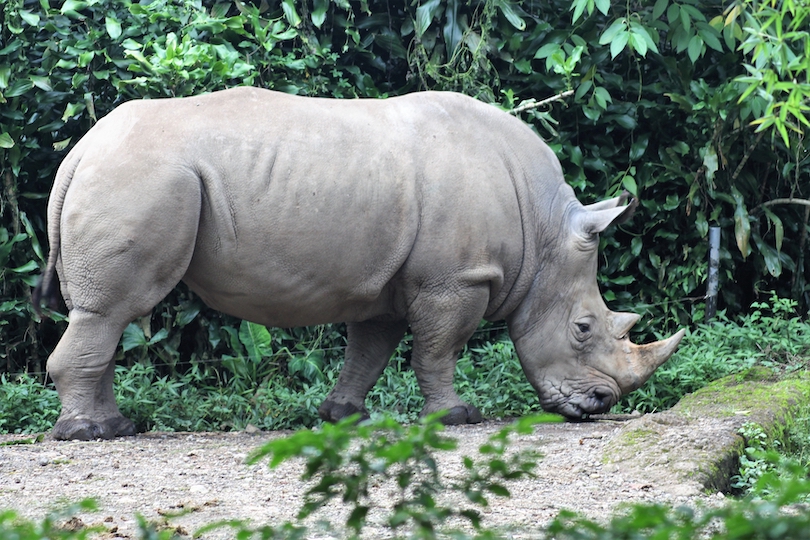 © Dreamstime
© DreamstimeOne of the rarest and most endangered large mammals in the world, the ginormous Javan rhinoceros can now solely be found in Ujung Kulon National Park on the Indonesian island of Java. While they once roamed throughout much of Southeast Asia and the Indian subcontinent, rampant poaching, the traditional medicine trade and habitat loss all contributed to their sad decline with only sixty or so individuals remaining in the wild today.
Similar in size to the black rhinoceros in Africa, mature adults normally measure about 10 feet in length and can weigh anywhere between 1,980 and 5,070 lb. The enormous ungulates usually reside in lowland rainforests, wet grasslands or on coastal plains where they can browse about for shoots, twigs, leaves and fallen fruit. Due to their extremely vulnerable status, not all that much is actually known about them with none even having been kept in captivity for over a century now.
5. Sumatran rhinoceros
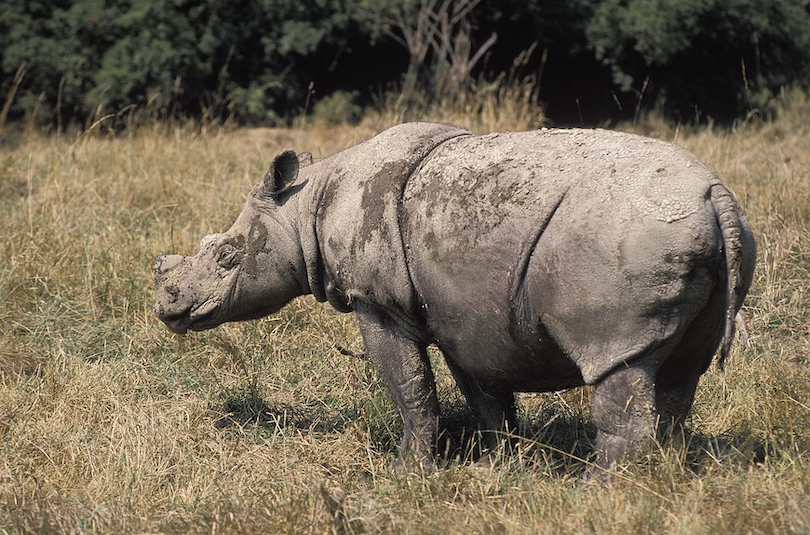 © Dreamstime
© DreamstimeAlso on the verge of extinction is the elusive and solitary Sumatran rhinoceros which is the smallest of the species. Now only found in tiny populations on the islands of Sumatra and Borneo, it used to inhabit rainforests, swamps and cloud forests as far away as India and China on the mainland. Sadly fewer than eighty are believed to exist on Earth now after having suffered centuries of poaching and habitat loss.
Unlike its nearby Javan and Indian neighbors, the Sumatran rhinoceros has two horns and reddish-brown hair which covers most of its body. Smaller in size, it typically weighs somewhere between 1,100 and 1,760 lb and stretches around 7 ft 10 in to 10 ft 6 in long. As well as being the most vocal of the species, it also communicates by marking soil, twisting saplings and through defecation with both males and females being very territorial in nature. Now listed as critically endangered, they are also believed to be the closest living relative to the long extinct woolly rhinoceros.

